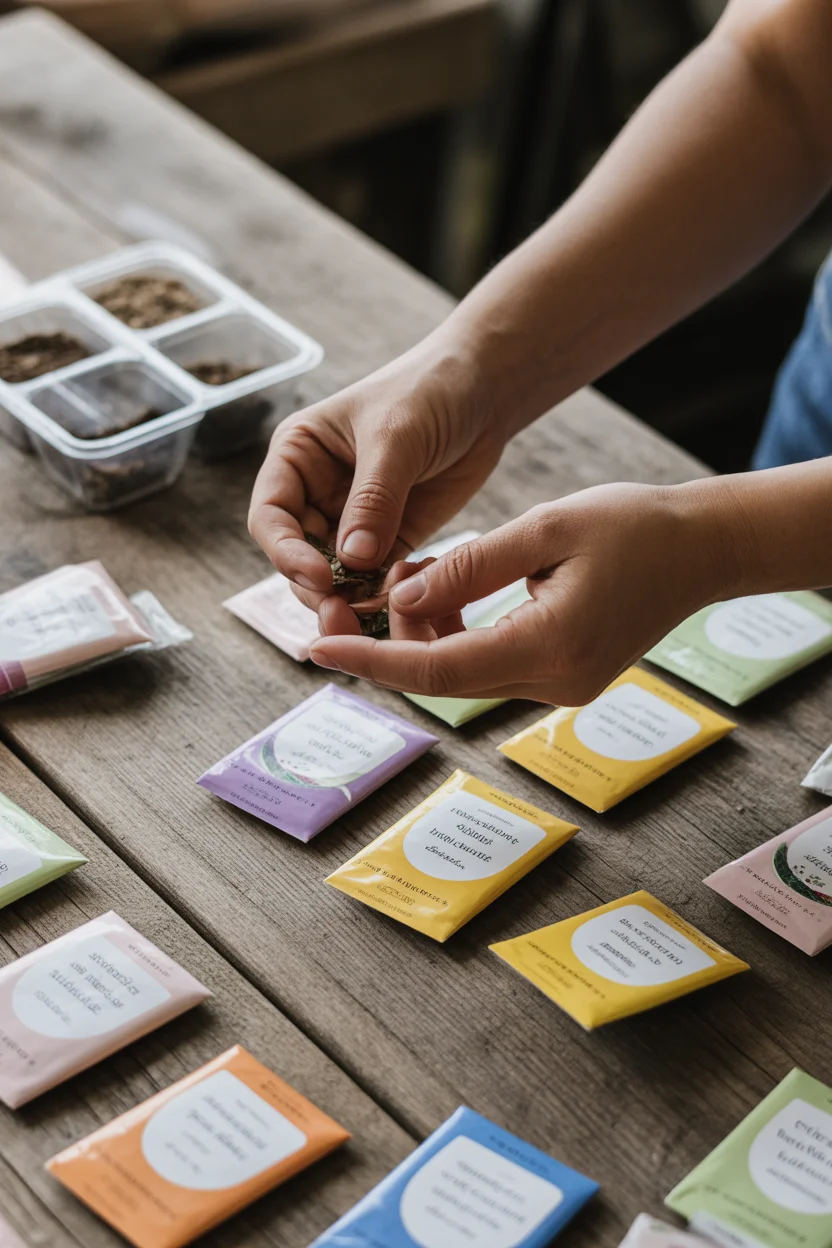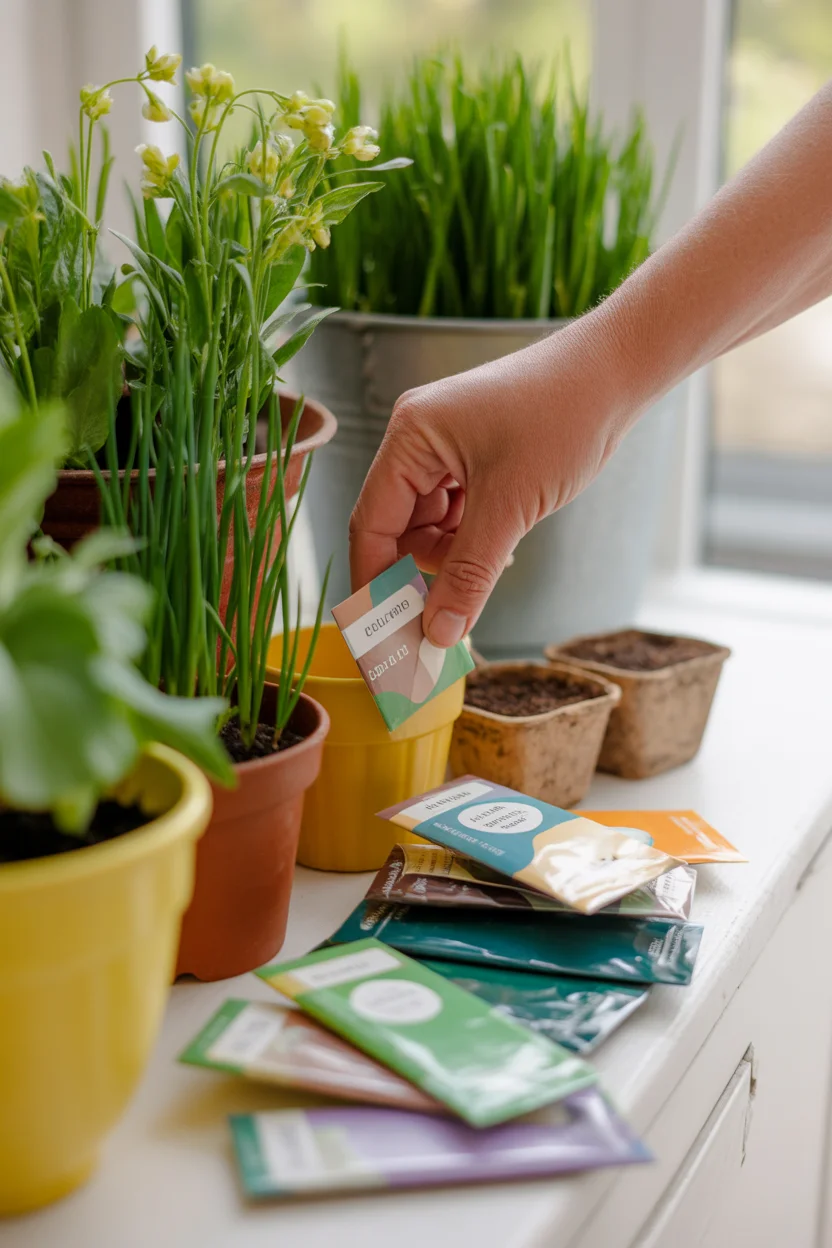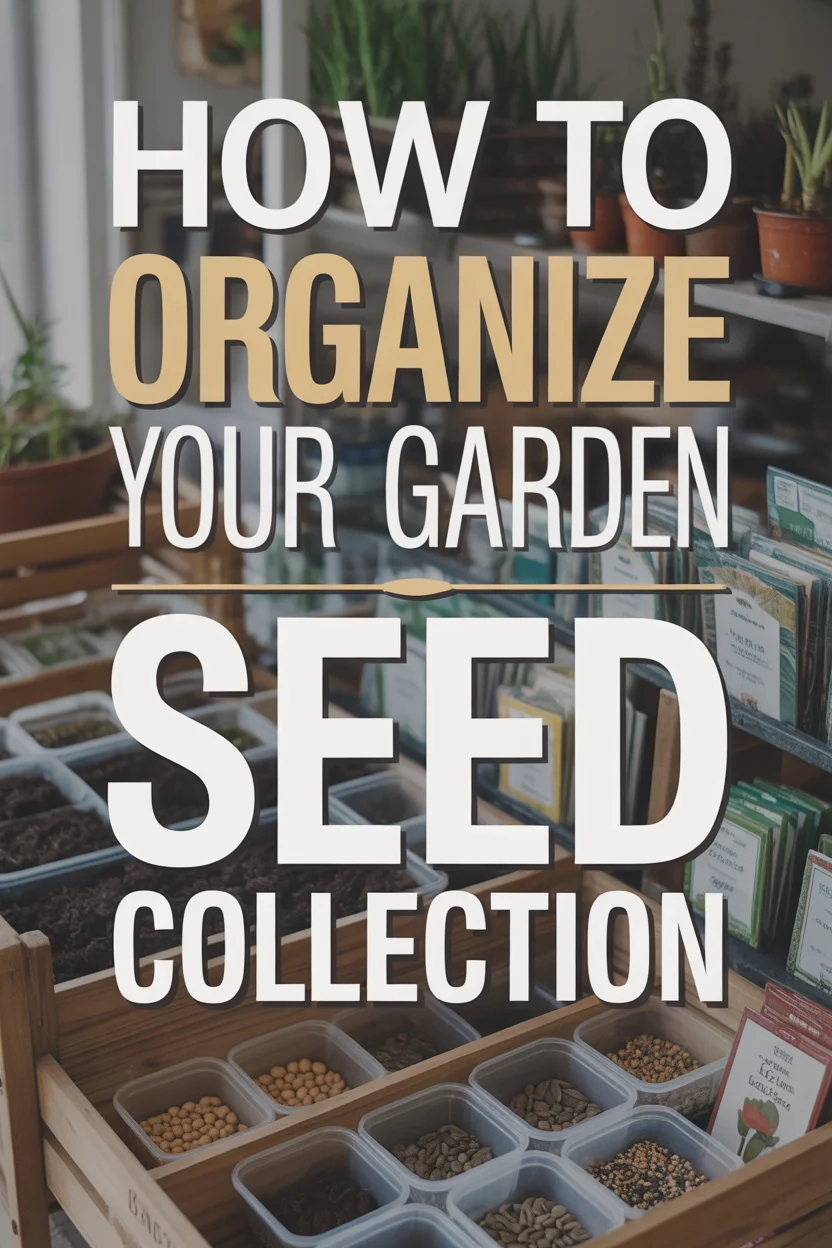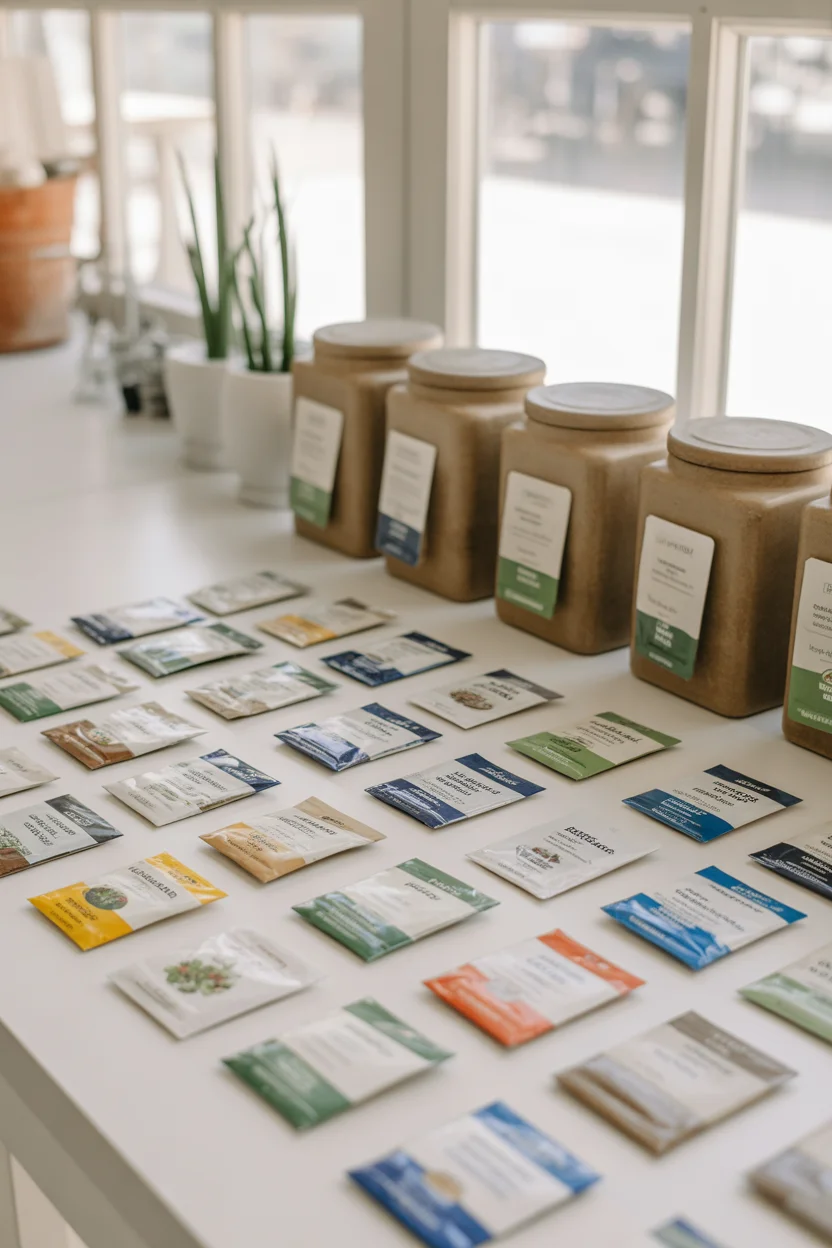Ever opened a shoebox of saved garden seeds and immediately felt…lost? Yeah, me too. How to Organize Your Garden Seed collection is one of those things that seems simple but somehow, it always ends up messy. Spill one packet and suddenly it’s chaos—tomato seeds hitchhiking into the lettuce section, old beans you forgot existed, and seed packs with faded labels. I get it. It’s like wrangling toddlers in the grocery store. If you’re looking for ways to skip the madness and actually enjoy starting seeds, you’re in the right spot. And honestly, after reading my last post about keeping your garden seeds organized and maybe getting inspired by these 10 purple plants for your garden, this will feel life-changing.
Table of Contents
Why Organizing Your Seeds Makes Sense
I used to toss seed packets in a big cookie tin. I thought, “Eh, I’ll remember where everything is.” Fast forward to spring and I’d spend hours digging for the butternut squash. Not fun. Organizing seeds lets you see what you have (and what you’re missing), keeps everything fresh, and saves cash—no more buying duplicates. Seriously, you’ll avoid planting ‘mystery peppers’ in your carrot row next spring. Plus, with a good plan, you get a sense of accomplishment. Like, look at me! I’m basically a five-star seed librarian.
The thing is, seeds are investments. Some stuff from two years ago might still be good, but only if you know you have it, right? Creating a system means no wasted effort or space in your backyard garden. You’ll plant smarter, earlier, and with a lot less stress. 
What You Need in a System for Storing Seeds
Let’s keep it basic. Whatever you use—plastic box, fancy storage binder, or upcycled envelopes—just needs to do three things: keep things dry, dark, and cool. If it fails one, you’re chancing mold or dead seeds. I learned this the hard way. Cardboard shoeboxes absorb moisture, metal tins sweat in humid closets…not good. Oh, and labeling! Without labels, you’re just playing seed roulette.
Also, the system should grow with you. Last year it was just basil and beans. This year, I’m feeling bold—jalapeños, sunflowers, the works. You want something flexible, especially if you check out these creative garden planter ideas. Don’t lock yourself into a system you’ll outgrow in a season. 
How to Organize Your Seeds
Let’s get down to it. First, gather all your seeds in one spot. Trust me, you’ll be shocked how many “surprise” seeds pop up. Next, sort by plant type—veggies, flowers, herbs. Some people do it alphabetically, but I’m not that put-together. Sometimes just putting similar things together is enough!
Here’s where it gets nitty gritty. Decide if you want to keep things by family (all tomatoes together) or by planting time (cool weather, warm weather). Honestly, try both. If you have a lot, you’ll need sections, like dividers in a photo box or recipe organizer.
If you’re short on space or just love gadgets, check out small photo storage containers. They’re a perfect fit, and waterproof. Also, make new labels if the old ones look sketchy (been there, done that). A black sharpie is your BFF here.
Oh! Don’t forget dates. A quick note on the packet—bought 2023 or “planted last year”—helps you ditch duds later. If you want to get super nerdy about it, throw it all in a spreadsheet or cute little notebook. Give everything a “last checked” date if you dare. 
How We Store & Organize Seeds
Now for confession time: I use a mix. Plastic recipe boxes are honestly the Goldilocks solution for me—not too small, not too big, fits seed packets perfectly. I made a divider out of an old file folder and used sticky notes for temporary categories (because my garden plans change like the weather).
Once a year, usually in January, I drag out my stash, do a quick sort, and toss anything iffy. The process is weirdly satisfying. If you ever wondered how to keep things extra-fresh, those tiny silica packs work surprisingly well too (grab one from an old shoebox, throw it in your seed box, boom—better seeds).
Oh, and don’t forget to keep that box somewhere dark and cool. Under the bed, back of a closet, or even in the basement is perfect—sunlight and moisture are the enemies here.
“Switched to using a plastic photo box setup and, honestly, it’s SO much faster and neater. No more mashed packets or random seed chaos. I just grab and plant.” – Jordan, fellow garden fanatic
Step 5: Create Dividers and Start Filing
Now comes the fun, slightly tedious, but very necessary part: actually making dividers. Not fancy? No worries. Use old envelopes, cut up cardboard, or raid your stash of holiday cards (hey, at least you’re recycling). Each divider gets a label, whatever system makes sense for you—herbs, “fall crops,” flower seeds, or by month you plant them.
Three things to keep in mind while doing this:
- Go bold with big, clear labels—nothing worse than squinting at 5-year-old handwriting.
- Use color if you want, but plain works just as well.
- As you file, check packets for expiring seeds so you don’t waste time next spring.
Honestly, if you’re not sure where to start, a good idea is to play around until it “clicks.” This isn’t rocket science. It’s okay if your system is a little messy or you change it up later. Flexibility is key.
What is the best way to organize seeds?
Honestly? The “best way” is the way you’ll actually stick with. If you need a clear answer, plastic photo boxes or recipe card holders are the easiest and most affordable. Label them, sort them by category, and keep them somewhere cool and dark. Old-school binders with pocket pages work great too, especially if you like seeing everything at once.
Let’s have a quick look at your options:
| Storage Type | Best For | Cons | Notes |
|---|---|---|---|
| Plastic photo boxes | Beginner and pro gardeners | Takes up shelf space | Waterproof, easy to label |
| Recipe card boxes | Quick access | May crack over years | Good for small gardens |
| Binders with sleeves | Visual organizers | Packets might slide out | Great for rare/heirloom seeds |
| Envelope method | Low-budget | Can rip easily | Fine if space is tight |
How do you space seeds in a garden?
This one tripped me up for years—until I just started reading the back of the packet. Most packets will flat out tell you “space 2 inches apart” or “thin to 1 foot.” If you’re planting a bunch, lay out a stick, mark with a sharpie about every inch or so, and use that as your guide. Some folks even use old rulers or random dowels. As long as you’re trying, plants won’t care if you’re off by a little.
If you want detailed layouts for your space, get creative—sketch it on graph paper or use free garden planning apps. I’ve even used sidewalk chalk outside. And if you love making your space both pretty and practical, these family backyard layout ideas help too. The main thing? Don’t stress. Plants are forgiving!
What is the correct way to seed storage?
Seed storage is more science than art—but it’s really not that hard. Keep ’em away from heat, moisture, and sunlight. That means closed boxes, dark drawers, or dry pantries. If you live where it’s crazy humid, throw in a little silica gel pack or even a tablespoon of dry rice. Airtight containers win for long-term storage, especially with stuff you save from year to year.
And no, you don’t need a fancy fridge or freezer (unless you’re hording seeds for the next decade). Room temp with no wild swings is just fine. Extra tip—don’t store seeds in the garage if you can help it. Too many weather changes. Keep it cool, keep it dark, keep it dry. Easy.
How to catalogue seeds?
Cataloging seeds sounds “Type A”…but wow, does it help. I just use a basic notebook. Write down the seed name, date bought, when or if you planted, and any notes (like wow, this tomato went wild in July). Spreadsheets are good if you love digital stuff, but don’t overthink it.
Some folks keep tiny sticky tabs on packets with notes like “Needs soaking!” or “Kids loved this one.” That’s adorable. I’m more of a scribble-in-the-margins sort. The point? Know what you’ve got, when you got it, and whether it’s any good.
If you’re getting into saving your own seeds, add the plant it came from—sometimes you get really good sunflowers from random volunteers, and you’ll want to remember that!
Ready to Feel Like a Seed Organizing Superstar?
So that’s my let’s-be-real take on how to organize your garden seed collection. Bottom line—simple systems win, and being a little scrappy is fine too. You don’t need fancy stuff (unless you WANT fancy stuff!). Pick a method, get labeling, and trust me, your spring planting will be a hundred times smoother than before.
If you want a bit more inspo, check out the wild ideas from How do you organize your seeds? : r/vegetablegardening or some real-life hacks on How to Organize Your Garden Seed Collection • The Prairie …. Give it a shot—and seriously, when you open your box next spring and everything is where you want, you’ll feel like you could run the world—or at least your backyard. 
FAQ about How to Organize Your Garden Seed
Q: Can you organize seeds without buying anything?
A: Absolutely, use envelopes, Ziploc bags, or shoeboxes—just make sure things stay dry and label everything or you’ll regret it.
Q: How often should I check old seeds?
A: Once a year is good enough. Take a rainy afternoon and sort, toss, or test germinate any questionables.
Q: Should I toss seeds after the ‘sell by’ date?
A: Not always! Many will still sprout two or even three years later—just do a quick sprout test in a wet paper towel.
Q: Can I mix seeds in the same container?
A: It’s best to keep different types separated, especially if they look alike. Otherwise, you’ll have a “what IS this??” problem next season.
Q: What about homemade seed packets?
A: Go for it! Use paper envelopes, label them well, and consider adding a packet inside a hard container for extra protection.

